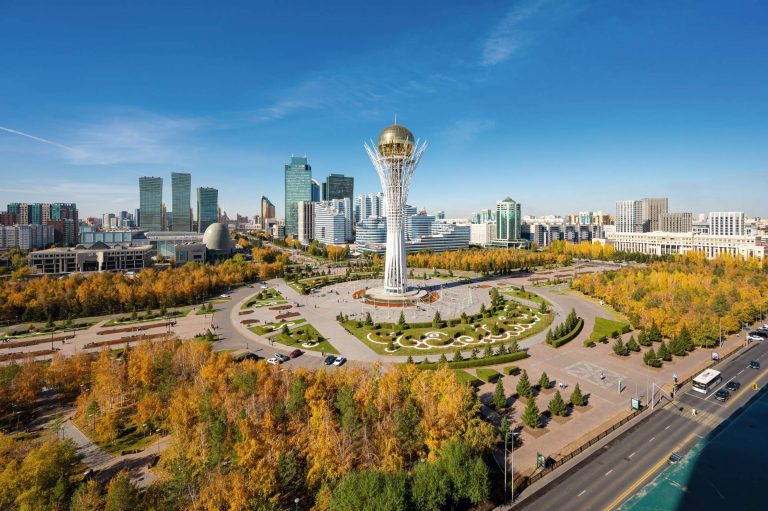The Great Silk Road forever changed the course of human history. Today, traveling through the southern regions of Kazakhstan — part of this medieval trade route — offers an opportunity to give new meaning to the ancient path.
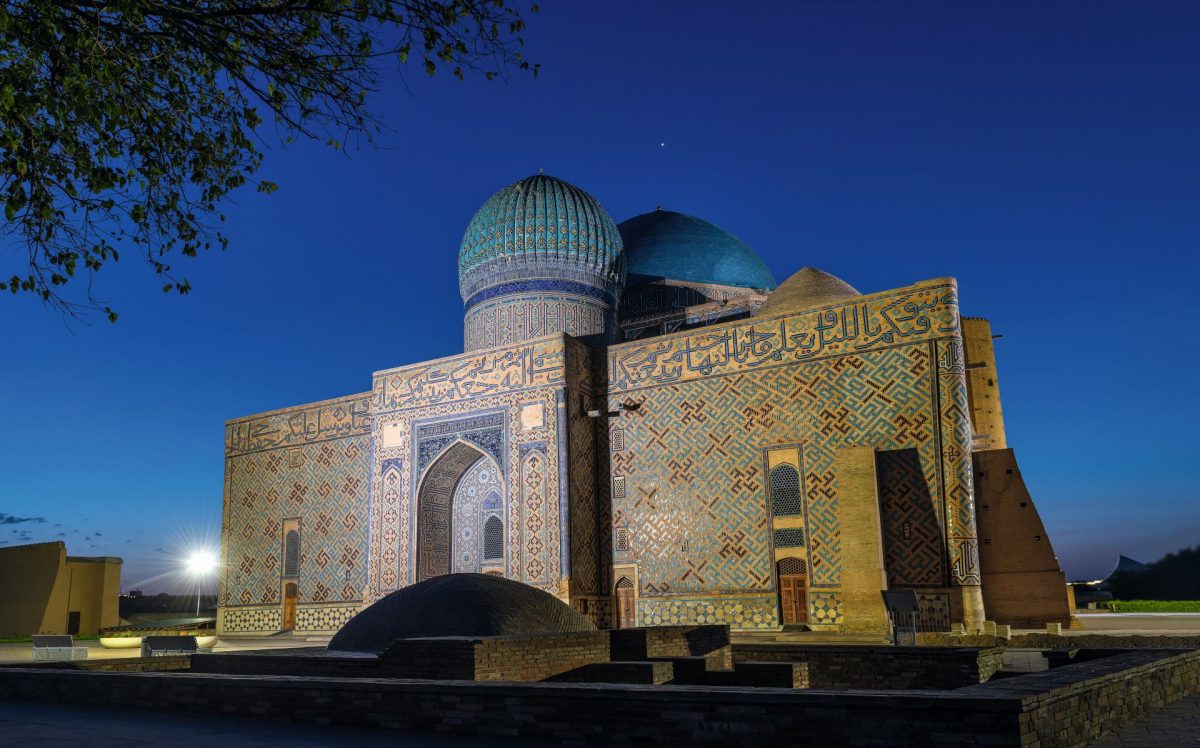
The Big Apple
Let’s begin our journey in Almaty — a vibrant city with a rich history where a fascinating mix of styles and influences come together. Despite its rapid growth, the city has managed to stay true to tradition and the authentic spirit of Kazakhstan. Old mid-20th century houses lining the cozy Tulebaev Street, dating back to the time when Almaty was still known as the Russian city of Verny; one of the largest mosques in Central Asia; the minimalist Pokrovsky Church and the ornate Ascension Cathedral; the shaded parks of Gorky and the 28 Panfilov Guardsmen; the Central State Museum and Kok Tobe Mountain with its funicular and panoramic viewpoint; apple (the name “Almaty” comes from the Kazakh word almaly, meaning “apple-laden”), cherry, and apricot orchards where nightingales sing enchantingly each spring; and more than 120 fountains — all of these landmarks ensure there’s more than enough to explore for several days!
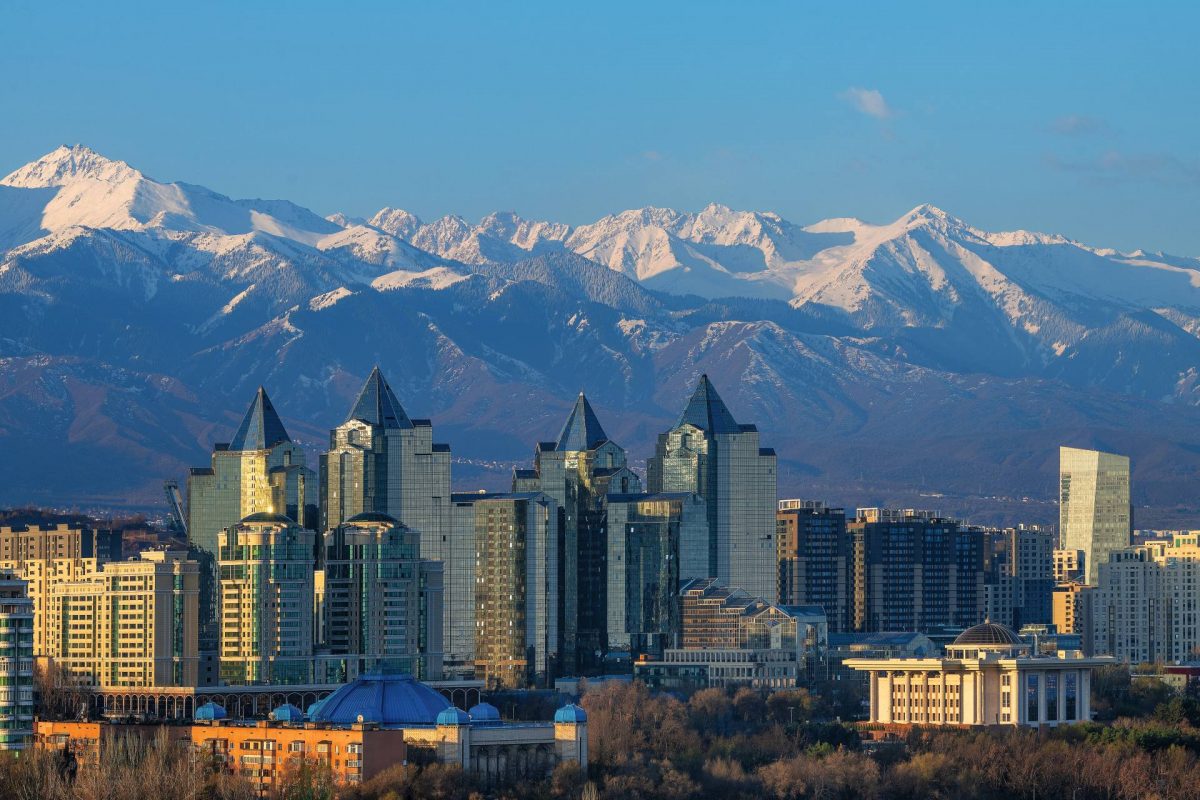
Just a 30-minute drive from the city center is the world-famous high-mountain skating rink, Medeu, with its unique ice that has seen nearly 200 world records set. Another half-hour by cable car takes you to Shymbulak, a year-round mountain resort where you can carve down groomed slopes and powder fields on skis or snowboards in winter, and in summer, explore the area on mountain bikes or hike to idyllic spots like Big Almaty Lake, the high-altitude Kok-Zhailau plateau (part of the Ile-Alatau National Park), and the waterfalls of the Butakovka Gorge. But if your soul longs for solitude, it’s best to head to the Northern Tien Shan, to the cascade of the Kolsai Lakes, connected by a scenic hiking trail. In the same region lies the stunning Lake Kaindy, whose most remarkable feature is the towering trunks of Tien Shan spruces, seemingly reaching skyward from beneath the water’s surface.
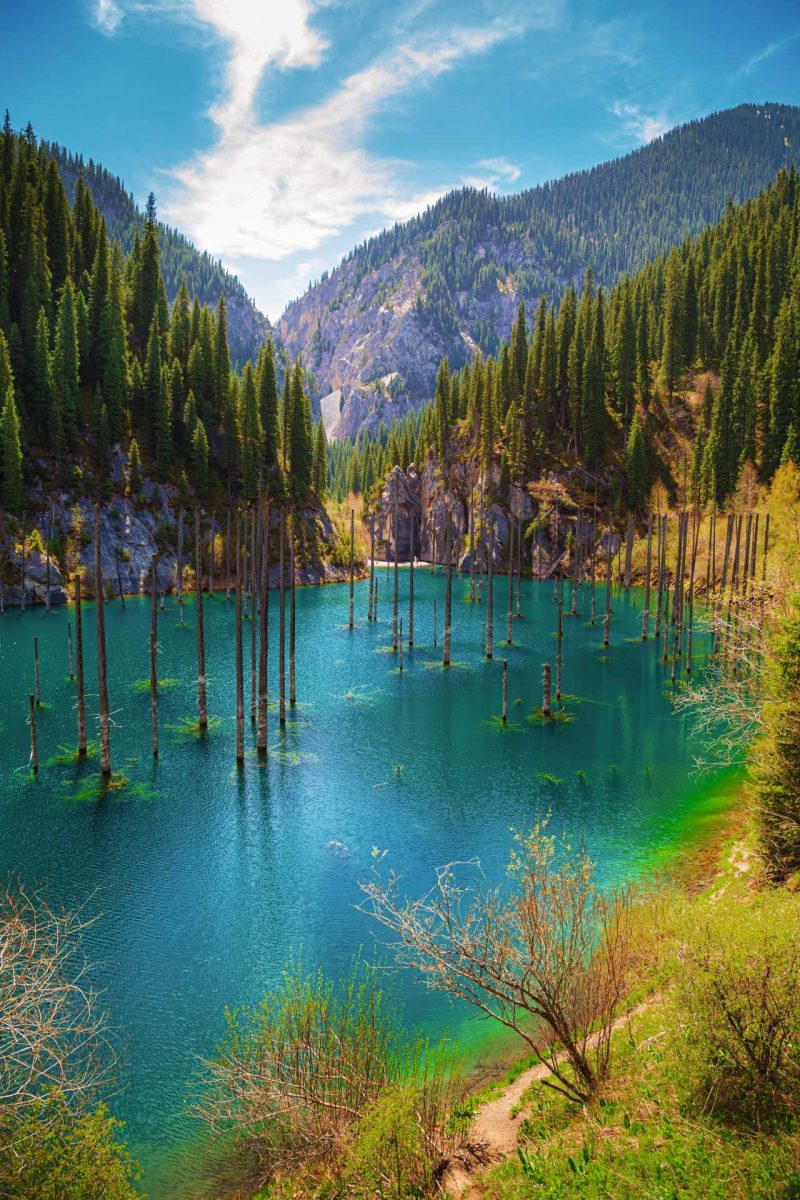
Around Almaty
The Almaty Region is a true treasure trove of Asian nature, where everything finds its place — mountains and canyons, forests and steppes, rivers and lakes. This is where you can visit the awe-inspiring Charyn Canyon with its Valley of Castles — the reddish sheer cliffs truly resemble unassailable mountain fortresses. Nearby, there are other canyons that only a few travelers venture to, such as the Zhabyr Tract, also known as the Moon Canyon, which bears a striking resemblance to Zabriskie Point in California’s Death Valley. The horseshoe bend of Charyn, known as the “Stone Shelf,” resembles the meander of the Colorado River in Arizona, while the gravelly clay mountains of Aktau and the Singing Dune in Altyn-Emel National Park look like ready-made sets for a remake of The Martian.
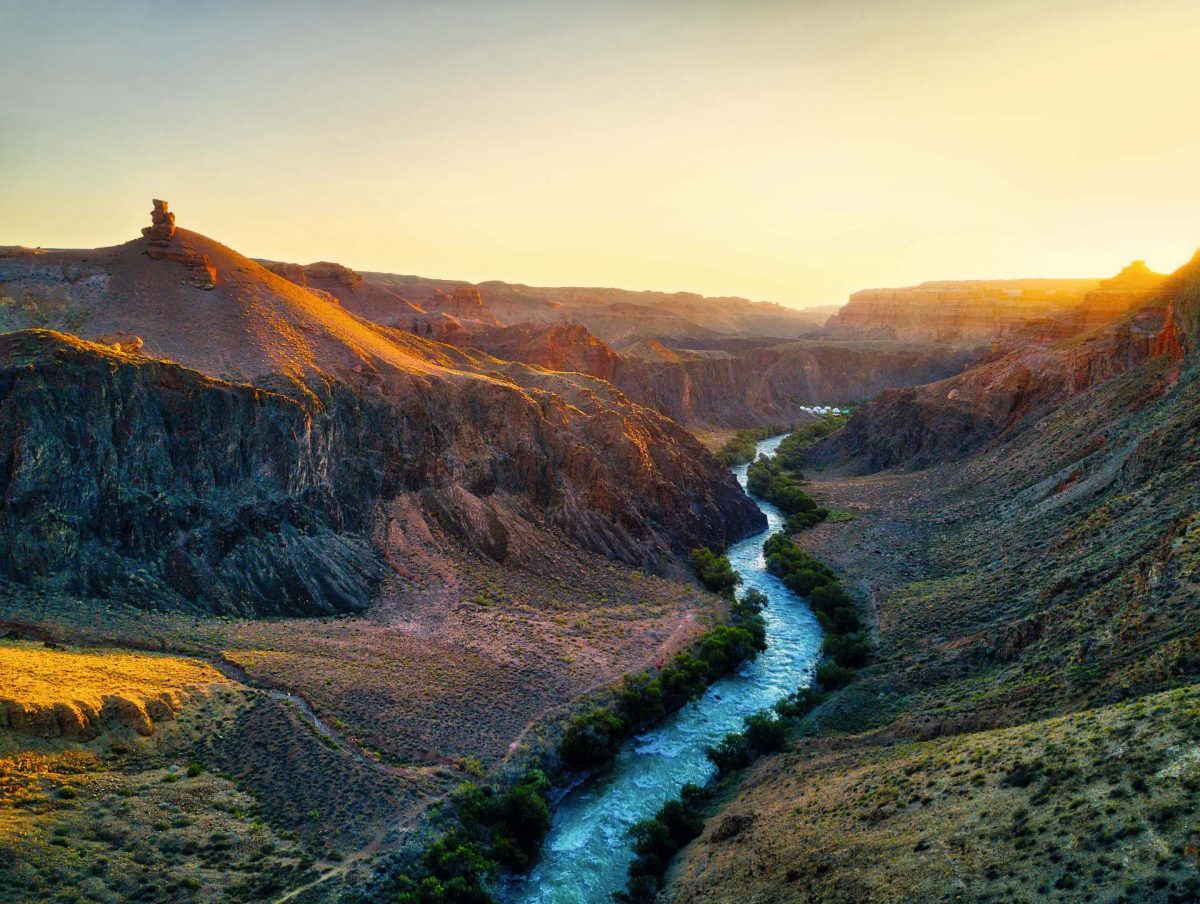
Sometimes natural landscapes go hand in hand with cultural ones, and the best example of such a “symbiosis” is the Tanbaly Gorge with its ancient petroglyphs — a UNESCO World Heritage Site. Here, more than two thousand rock carvings depict animals, hunters, chariots, scenes of childbirth, and ritual sacrifices. Most striking are the unusual figures of sun-headed deities standing on the back of a bull — like visitors from other worlds, they lend a surreal quality to the scenes unfolding across the stone.
There is a city made of gold
The Great Silk Road — a network of trade routes spanning some 7,000 km — connected East Asia with the Mediterranean. Depending on weather, military, and political conditions, these routes would shift, but historians most often speak of two primary branches: the northern and the southern. It was the northern route that passed through the south and east of Kazakhstan, notably the cities of Sayram, Sauran, and Taraz.
Not long ago, the Ancient Taraz archaeological park opened to the public. It features a large public square, an ethnocultural center, an observation tower, a museum with an extensive collection of artifacts, and a mud-brick citadel dating back to the Middle Ages. Near Taraz, be sure to visit the “Kazakh Taj Mahal” — the Aysha Bibi Mausoleum, adorned with terracotta tiles and delicate ornamental patterns. Aysha, the daughter of a scholar and poet, died from a snakebite, and her beloved Karakhan, the ruler of Taraz, ordered a magnificent mausoleum to be built in her honor.
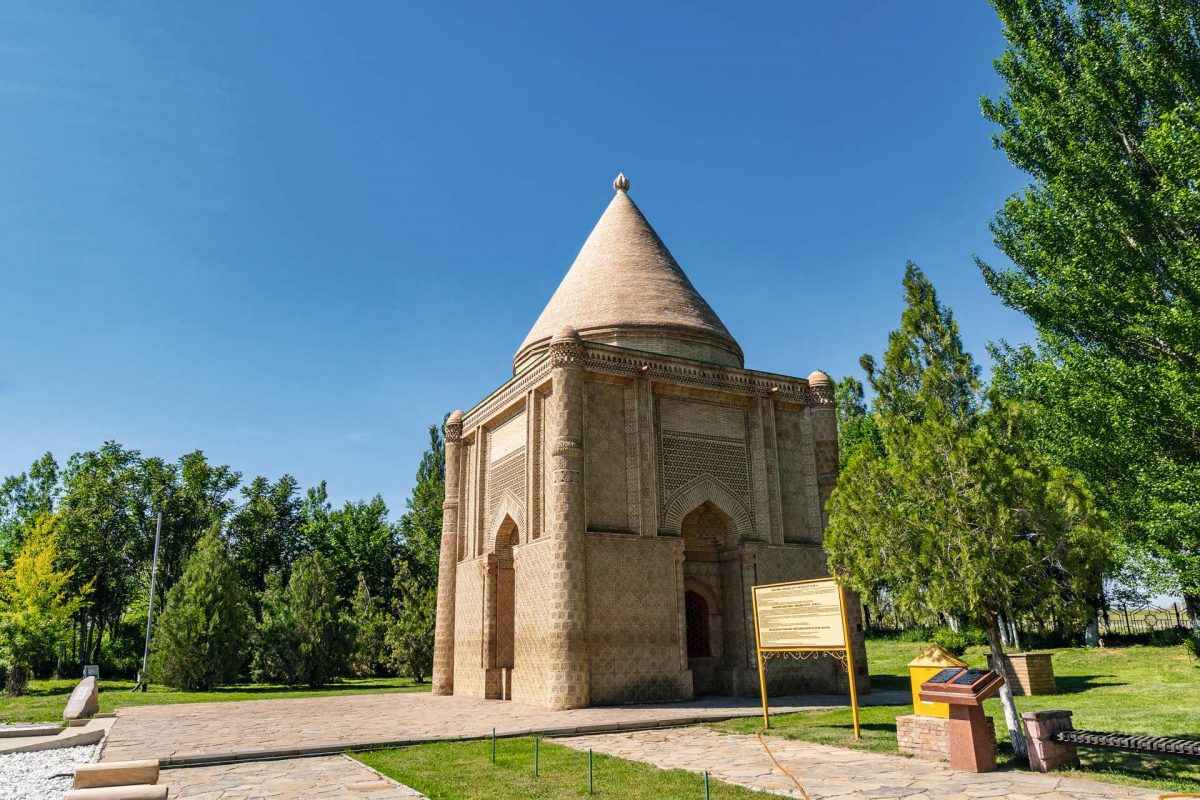
Just an hour’s drive from Taraz lie the mysterious ruins of the unfinished Akyrtas Palace. It was built from massive stone blocks, and to this day, scholars have not been able to determine its exact purpose, construction date, or even its original owner.
The power of nature
Kazakhstan is often called the Land of the Great Steppe. But within the borders of this vast country — the ninth largest in the world by area — lie numerous nature reserves and national parks. The oldest protected area is Aksu-Zhabagly, a nature reserve established in 1926, located at the border of two regions: Zhambyl and Turkistan. The reserve is vast and diverse, with towering mountains (the Western Tien Shan rises to nearly 4,300 m), alpine meadows bursting with colorful blooms in spring, and sweeping grassy steppes. Aksu-Zhabagly is also home to many endemic animal species, such as mountain goats and argali sheep. And it’s from April to June that one should visit to admire the region’s flora, including the elegant Greig and Kaufmann tulips. It was from here that their bulbs were once taken to ancient Persia and Turkey, eventually making their way to Europe.
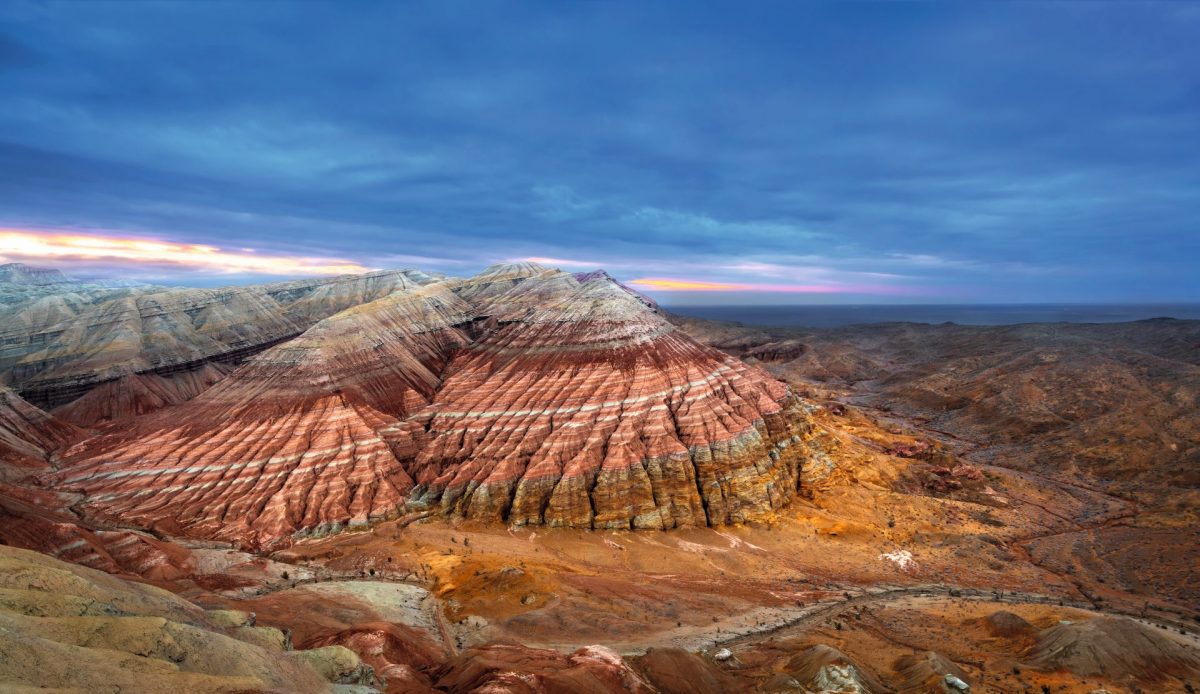
Spiritual site
Recently, Kazakhstan introduced the Sacred Map of the Republic’s Shrines — featuring mausoleums of prominent religious figures, mazars (saints’ graves), mosques, and memorials. Nearly a hundred tulip species can be found in the Turkistan Region. The main spiritual site is the Azret-Sultan Historical and Cultural Museum-Reserve, home to the grand mausoleum of the Sufi poet and preacher Khoja Ahmed Yasawi, built by order of Tamerlane himself. Within the same complex, visitors can also see a traditional monsha bathhouse, other mausoleums, an underground mosque, and a narrow cell where Yasawi spent his final years by choice.
Perhaps the most unusual place in the region is the limestone cave known as Ak-Mosque. A steep staircase leads down into this massive 30-meter cavern. According to legend, a dragon once lived here, terrorizing local villagers, until it was defeated by the prophet Suleiman. Near one of the walls of the Ak-Mosque stands a topchan (traditional bench), where the guardian of the cave — the shyraqshy — prays together with anyone who wishes, asking the Almighty for strength and good health in facing life’s hardships. There’s even a small “dragon’s throne” — a narrow crevice you can crawl through to reach a hollow inside, sit comfortably, spend a quiet moment alone with yourself, and sort through the memories and impressions of your journey through southern Kazakhstan.
Photo: shutterstock.com


